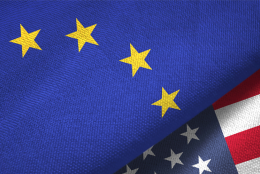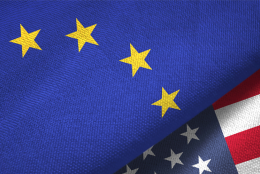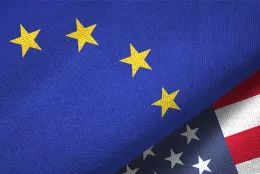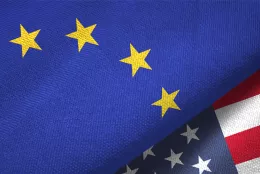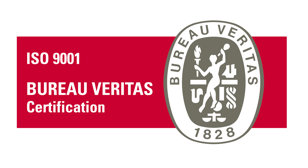Article

What do you need to know about China’s new patent law 2021?
China is one of the most dynamic and promising economies in the world. In order to meet the demands emerging from the booming market, China National Intellectual Property Administration (CNIPA) has further revised the Patent Law for the fourth time, what is a new milestone in terms of the relatively short history of the Chinese Patent Law.
The current Chinese Patent Law came into force in 1985 and was revised three times respectively in 1992, 2000 and 2008. The fourth revision draft was proposed in 2012 and was followed by multiple amendments. Eight years after it, the final version was promulgated on October 17, 2020, and came into force on June 1, 2021.
The fourth revision of the Chinese Patent Law (hereinafter referred as “2021 new Patent Law”) includes many modifications, among which the following key points are of interest for companies, especially European ones. These points are grouped into the following three aspects.
1. Improving Patent Prosecution (Examination)
1.1 New Circumstance for Non-prejudicial Disclosure
Amended Article 24 of the 2021 new Patent Law stipulates a new circumstance for non-prejudicial disclosure, in addition to already stipulated non-prejudicial disclosures under the events of international exhibition, academic or technological meeting, and non-consent disclosure. This modification will help to better respond to emergencies and extraordinary circumstances, such as Covid-19 pandemic, to promote the timely implementation of the inventions for disease treatment so as to solve public health problems.
In particular, pursuant to Article 24, novelty of a patent application is not lost, if, within six months before the date of its filing, the invention claimed by the patent application is first disclosed for public interest purpose during a national emergency or any extraordinary state of affairs.
This ensures that patent applications can still be filed and granted for the disclosure under emergencies and extraordinary circumstances without such a disclosure becoming state of art, for instance, pharmaceutical companies that make Covid-19 vaccines can disclose and use the vaccines within six months before the filing of a patent application without losing novelty due to the early disclosure of the vaccines.
1.2 New “Principle of Good Faith"
New Article 20 of the 2021 new Patent Law stipulates: “The application for patent and the exercise of patent rights shall follow the principle of good faith. The patent shall not be abused to the detriment of public interests or the legitimate rights and interests of others. Abuse of patent rights to exclude or restrict competition constitutes monopolistic behaviour and shall be ruled in accordance with the Anti-Monopoly Law of the People's Republic of China.”
Under this new article, a patent shall be filed, granted and implemented under the “Principle of Good Faith”. On the one hand, this new article prevents malicious and abnormal applications, for example, the falsification of experimental data and technical solutions in the patent applications. On the other hand, it also prevents the abuse of patent rights eliminating or suppressing competition, such as maliciously initiated infringement lawsuits that disrupts the normal market economic order.
For the time being, an “Information Disclosure Statement” (“IDS” requirement as known for example before the USPTO) is not needed.
2. Strengthening Patent Protection
2.1 Improved Design Patent Protection
The 2021 new Patent Law further improves the design patent protection system in 1) allowing partial design and 2) extending protection period.
First, under the previous Patent Law, design patent can only protect “a product as a whole”. The parts, such as a heel part of sock, a cup handle, that cannot be divided or sold separately from the product and cannot used alone, are not patentable.Such a system cannot meet the development of industrial design and refined division of labour, where a product may indeed comprise sub parts and partial designs from different manufactures and designers and these partial designs cannot be covered when only the overall design is protected. This also brings problems for GUI (Graphical User Interface) designs, where a product covers the device displaying the GUI, not the GUI per se, which may unreasonably limit the protection scope.
Pursuant to revised Article 2 of the 2021 new Patent Law, it is now possible to seek protection of partial designs, which is in conformity with the EU design system.
Second, the protection period of design patents is now extended to 15 years instead of 10 years as stipulated in Article 42 of the 2021 new Patent Law, so as to meet the requirements of China’s accession to the Hague Agreement Concerning the International Registration of Industrial Designs, and also to improve the protection of designs, especially for those with more commercial value.
Third, pursuant to revised Article 29 of the 2021 new Patent Law, a design patent application can now claim domestic priority within 6 months form the date of filing, which is previously only applied to invention and utility model patent applications. This new system may provide applicants a new approach to remedy mistakes, such as rejection or deemed withdrawn of the first design applications, by filing a new design application by claiming the domestic priority.
2.2 New Drug Patent Protection
- Extended Protection Term of Drug Patent
The pharmaceutical industry, due to its special characteristics, relies more significantly on patent protection than other industries. However, it often takes a lot of time for innovative drugs to be approved and marketed, resulting in the impairment of the effective protection period of patents.
Usually, when the patent of an innovative drug expires, generic drugs will enter the market significantly at low cost and low price, which will have a great impact on the price and sales of patented drugs. This may even make it difficult for originator drug companies to recover their R&D costs, and thus discourage R&D.
In order to solve the above dilemma, a new drug patent protection term extension system is introduced by revised Article 42(3) of the 2021 new Patent Law, which stipulates that “to compensate for the time taken up by the review and approval of applications for new drug marketing approvals, the patent administration department under the State Council may, on the request of the patentees, give compensation in the form of extended patent term to the new drug invention patents that have been approved for marketing in China. The compensation period shall not exceed 5 years, and the total effective patent term after the new drugs are marketed shall not exceed 14 years.”
Such a drug patent term extension system is quite similar to the Supplementary Protection Certificates under 1768/92/EEC in the EU and Patent Term Extension in the US with a slight difference in the calculation of the term of protection.
Therefore, under the new drug patent protection term extension system, if the patentee requests and if there is a delay due to the new drug review and approval, the term of protection of a drug patent can be extended up to 5 years, but not exceeding 14 years after the new drug is marketed. For example, if a drug patent application is filed in 2000 and granted in 2005, the new drug is marketed in 2006. The patent term ends in 2020, and the protection period after the drug is marketed exceeds 14 years, and thus no extended protection period is compensated.
Moreover, in addition to the protection term extension exclusively for the drug patent, revised Article 42(2) of the 2021 new Patent Law further stipulates a more general patent term compensation system adapted to all invention patents. In particular, pursuant to Article 42(2), if an invention patent application is granted after four years from the date of filing and three years from the examination request, the patentee may request for patent term compensation for any unreasonable delay caused by CNIPA.
- Drug Patent Linkage System
In addition to the drug patent extension system, similar to the Hatch-Waxman Act and in order to balance the interests of originaltor drug companies and generic drug companies to promote drug innovation and regulate drug quality, the 2021 new Patent Law also introduces a new drug patent linkage system.
Article 76 of the 2021 new Patent Law is newly added to provide such a new mechanism for the early resolution of drug patent disputes, in order to resolve potential patent disputes as early as possible before the relevant drug is marketed.
Under the drug patent linkage system, the CNIPA and National Medical Produces Administration (NMPA) will work together in order to regulate the market approval of drugs to any potential patent dispute regarding the new drugs. Market approval can only be granted after the dispute is dealt with.
2.3 Improved Legitimate Rights and Interests of Patentee
- Severer Statutory Compensation and New Punitive Damage
Revised Article 71(2) of the 2021 new Patent Law increases the amount of statutory compensation from the range of 10,000 RMB to 1 million RMB to the range of 30,000 RMB to 5 million RMB, wherein the statutory compensation is awarded when the loss of the right holder and the gains of the infringement are hard to prove.
Moreover, revised Article 71(1) of the 2021 new Patent Law also newly introduces punitive damage. Contrary to compensation principle where damages are calculated based on the actual loss or gains of infringement, punitive damages can be awarded up to five times the amount of the times the amount of compensatory damage.
Both the severer statutory compensation and new punitive damages may greatly discourage potential patent infringement and better protect patentees.
- Improved Rules of Evidence
In practice, it is hard collect infringement evidence during the legal actions, especially the evidence relating to the amount of damages or compensation.
To solve this problem, revised Article 71(4) of the 2021 new Patent Law also stipulates that the court may order the infringer to provide the account book and information related to the infringement if the right holder (plaintiff) has made every effort but still cannot obtain these evidence. If the infringer is not willing to provide or provides fake evidence, the court may award damages based upon the proof and claims of the rightsholder. Therefore, burden of proof is shifted pursuant to revised Article 71(4), so as to put the patent right holder in a better position.
2.4 Enhanced Administrative Patent Enforcement Mechanism
In addition to judicial protection (litigation), Chinese patent system also provides administrative protection. Although such an administrative enforcement mechanism is already stipulated in the previous amendments of Patent Law, the 2021 new Patent Law gives further provisions in new Article 70 that gives CNIPA and local patent administrative departments more authority to handle patent dispute cases.
In this case, the enhanced administrative patent enforcement mechanism provides a more efficient and low cost administrative remedy in case of patent disputes.
3. Promoting Patent Exploitation
In order to reduce transaction costs and improve the efficiency of patent exploitation, a new open licensing system is introduced in new Articles 50 to 52 of the 2021 new Patent Law.
Under the new open licensing system, a patentee may apply for an open license before CNIPA by a written statement clarifying the cost and payment, wherein for utility model and design patents, a patent evaluation report must be provided for the open license, no sole or exclusive licenses will be granted during the term of the open license. Afterwards, any person may obtain the patent license (not exclusive license) after notifying the patentee in writing and paying the royalty. During the open licensing term, patent annuity will be reduced.
The new open licensing system helps the patentee to find potential licensees and vice versa in a more efficient manner to promote patent exploitation.
Conclusion
To sum up, the 2021 new Patent Law brings a series of important modifications, among which the abovementioned points are worthy of our attention, since these points reflect the intention of the legislator to further strengthen the Chinese patent system and provide more protection. These new changes shall be considered when planning and implementing patent strategies in China.
If some specific questions raise from this communication, our Plasseraud IP Patents Team would be delighted to help you.


















